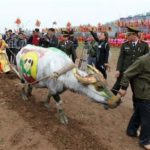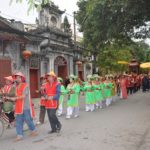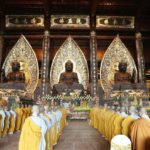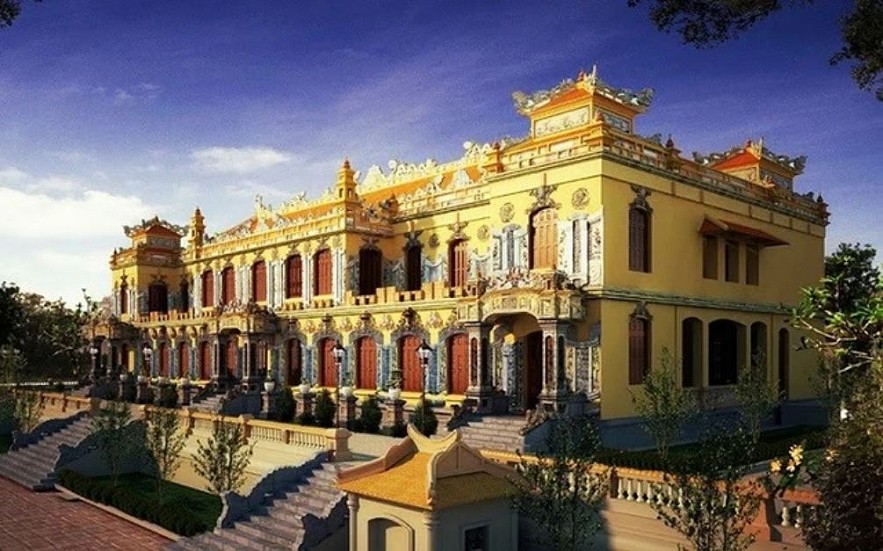 |
| Kien Trung Palace was constructed between 1921 and 1923 during the reign of King Khai Dinh (1885-1925). Photo: suckhoedoisong.vn |
Located in the Hue Imperial Citadel, Thai Hoa Palace was built in 1805 under the reign of Emperor Gia Long (1762-1820). The palace is a symbol of the power held by the Nguyen Dynasty and served as a venue for important imperial events such as coronation ceremonies, the emperor’s birthdays, and receptions for foreign ambassadors, according to VOV.
The palace has been recognized by UNESCO as a Documentary Heritage under the Memory of the World Program in the Asia-Pacific region.
Kien Trung Palace, built between 1921 and 1923 during the reign of King Khai Dinh (1885-1925), was once the living and working space of Bao Dai (1913-1997), the last king of the Nguyen Dynasty (1802–1945).
Hoang Viet Trung, director of the Hue Monuments Conservation Center, stated that Thua Thien Hue province will attempt to open major monument restoration projects specifically during Tet to welcome visitors.
“We are fully preparing stories of the palaces and related artifacts of Vietnamese dynasties to serve tourists on the occasion,” he added.
Hue, the imperial capital of Vietnam for over 100 years, is a unique destination in central Vietnam with its five UNESCO heritages: the ancient citadel relic complex, Hue royal court music, Nguyen Dynasty’s wooden blocks, Nguyen Dynasty’s royal administrative documents, and literature on Hue royal architecture.
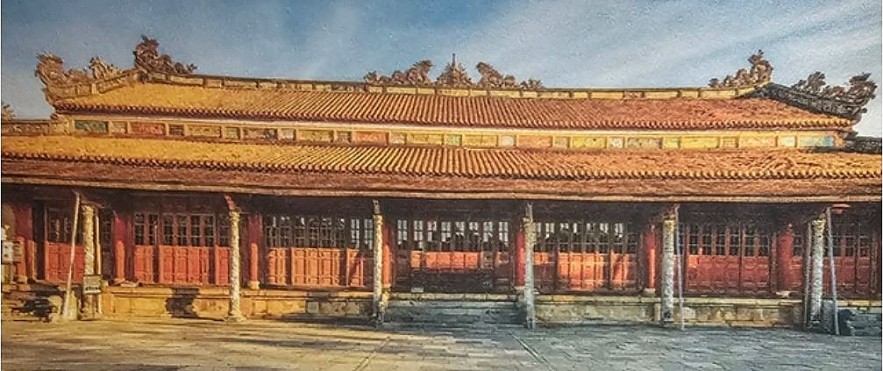 |
| Thai Hoa Palace was built in 1805 under the reign of Emperor Gia Long (1762-1820). Photo: suckhoedoisong.vn |
This year, Thua Thien – Hue plans to welcome up to 4 million tourists, with domestic visitors accounting for 60-70%, and generate an estimated revenue of 8 trillion VND (329.6 million USD).
Diversifying tourism products and enhancing customer experiences are important measures for Thua Thien-Hue to achieve its goals. In addition, the province intends to expand high-end tourism offerings, focusing on cultural and heritage tourism, eco-tourism, resort and healthcare tourism, and MICE tourism, among others.
The province will continue to develop smart tourism by leveraging digital transformation and promoting green and sustainable practices.
Hue, the imperial capital of Vietnam for over 100 years, is a unique destination in central Vietnam with its five UNESCO heritages: the ancient citadel relic complex, Hue royal court music, Nguyen Dynasty’s wooden blocks, Nguyen Dynasty’s royal administrative documents, and literature on Hue royal architecture, according to VietnamPlus.
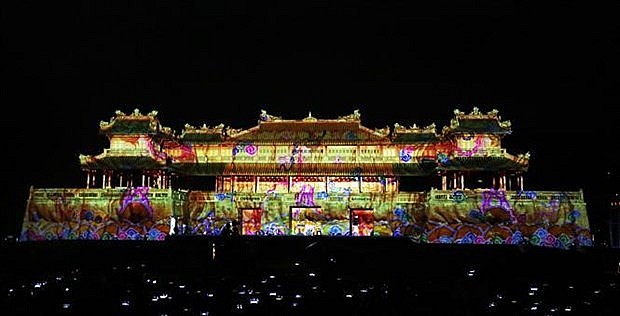 |
| “Hue by Light – The Live Show” offers a spectacular display of lights. Photo: VNA |
This year, Thua Thien-Hue aims to welcome up to 4 million tourists, with domestic visitors accounting for 60-70%, and generate an estimated revenue of 8 trillion VND (329.6 million USD).
Diversifying tourism products and enhancing customer experiences are important measures for Thua Thien-Hue to achieve its goals. In addition, the province plans to expand into high-end tourism offerings, focusing on cultural and heritage tourism, eco-tourism, resort and healthcare tourism, and MICE tourism, among others.
Tam Chuc Pagoda – Ancient beauty amidst majestic scenery
Covering 5,100 ha, Tam Chuc complex is a perfect combination of ancient beauty and the mighty of the immense mountain.

